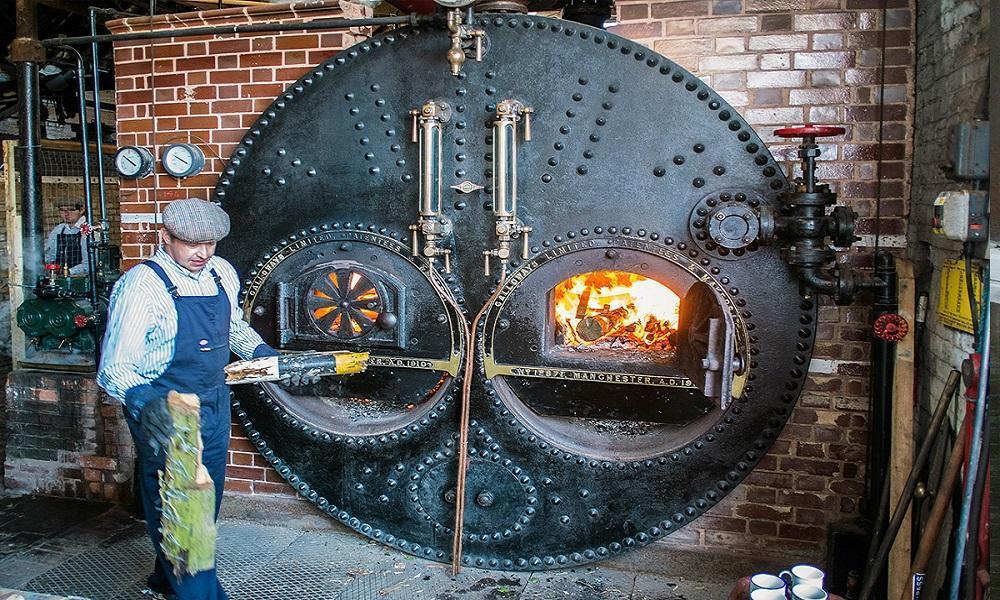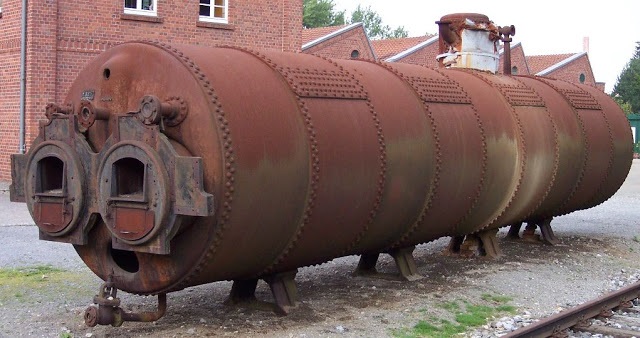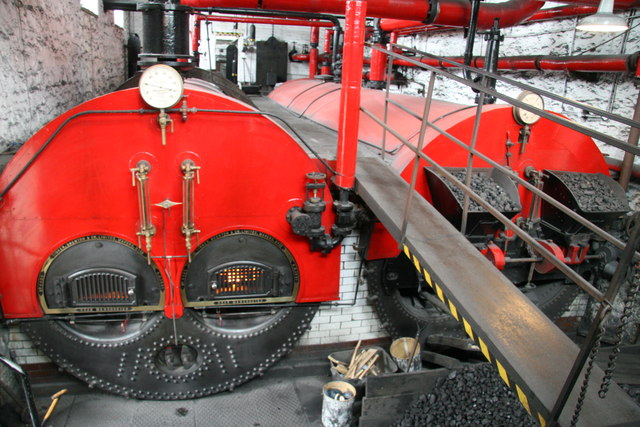In this article from Linquip, we will talk about the Lancashire boiler, its parts, and how it functions. Plus, you’ll find information about the application of Lancashire boilers too! By the end of this article you’ll have a general knowledge about boilers, can easily talk about Lancashire boiler and its working principles. Plus, you can easily tell if this boiler is the right fit you’re your system or not. Are you ready to learn more? Then join us and continue reading.
What is Lancashire Boiler?
Some people don’t know Lancashire boiler pronunciation let alone its definition. The pronunciation of this boiler is like this: /ˈlæŋkəʃər ˈbɔɪlə/. This boiler was invented by William Fairbairn in 1844.
This boiler is among horizontal boilers and if you are among the ones who want to know that Lancashire boiler is of which type, you’ll be glad to know that the answer is Fire-tube! This boiler type uses hot gasses to heat up the water in a sealed container of water, resulting in the creation of steam.
There are two fire tubes in this boiler that are the same length as the length of the boiler but their diameter is less than half of the shell’s diameter. This boiler is considered to be similar to the Cornish boiler but one of the major differences between these two is that inside a Lancashire boiler, you’ll find two flues instead of one.
Lancashire Boiler Parts
There are some parts in this boiler that are similar to other boiler types, but then there are other parts that are different which makes this design unique and suitable for specific needs. Here we will list the most important parts in a Lancashire boiler:
Cylindrical Shell: This shell lays over a brick work in a horizontal position and is filled with water to a pre-defined level.
Grate: The fuel that is used for combustion in this boiler is in the grate.
Fire Hole: The fire hole is used to deliver the coal to the grate for combustion.
Feed Valve: This valve helps in delivering the fuel material inside the grate.
Safety Valve: When the pressure reaches the pre-defined limit, the safety valve releases the extra pressure to keep the whole system safe.
Fusible Plug: Fusible Plug is above the grate and helps to avoid the overheating of the coil tubes. When the water level falls below the pre-defined level, an alarm warns the system to run the necessary process and bring it back to the desired level. A low water alarm is responsible to trigger this action.
Bottom Flue: As the name suggests, this unit is at the bottom of the shell and takes the hot gasses to the back of the Lancashire boiler.
Side Flue: There are two flues on both sides of the Lancashire boiler’s shell. They are responsible to take hot gasses to the boiler’s main outlet.
Blow-off Clock: This unit is beneath the front section of the shell and is used to remove sediments and mud. Plus, during the inspection, this unit is used to empty the boiler’s water.
Dampers: Dampers are at the end of the side flues and are used to control the gasses’ flow from side flues to the chimney.
Lancashire Boiler Application
This boiler is used to drive locomotive and steam turbines. It is also used in other industries such as chemical, sugar, paper, textile, tire, breweries, etc.
How Does a Lancashire Boiler Work?
Lancashire boiler has a horizontal cylindrical shell that is filled with water up to a pre-defined level. It has two fire tubes and exchanges the heat. As you know by this point, the fuel is added to the grate in this boiler type and by burning the fuel, the boiler produces hot gasses needed to boil the water and create steam. When they are produced, they flow from the grate through the fire tube to enter the front part of the boiler.
In the front part, they leave the bottom flue and enter the side ones and flow to the back to enter the main outlet.This movement first warms up the bottom of the shell. Then, when the hot gasses reach the front end of the boiler, they divide between the two side flues and warm up the sides of the shell. Then, they go to the back of the boiler to reach the chimney flue and will be discharged into the atmosphere.
This process heats up the boiler and the heat is transferred through the surface of the flue tubes to the water. These surfaces are in the water inside the boiler and that’s how they transfer the heat into the water. The bottom and the side of the shell also transfer the heat to the water. The flow of hot gasses is controlled and regulated with the help of dampers.
By absorbing the heat, the water turns into steam and the steam stays at the top of the shell. Then a pipe separates this steam from the water to transfer it for different purposes.
Lancashire Boiler Advantages and Disadvantages
It has a simple design and is easy to use and operate. Lancashire boiler is also among the economical boilers and has a low maintenance cost. It produces high-quality steam and has a high overall efficiency of around 80% to 85%!
Like any other boiler, it has some disadvantages too! Due to the horizontal structure of this boiler, it needs more space. The fire tubes in this design have small diameters and therefore this boiler has limited area for grate. The cleaning of this boiler is difficult too!
That was all the basics you needed to know about Lancashire boiler. Now you know its type, function, application, and can easily understand how it works. If you have anything to add to this article or have any experiences with boilers, comment below and share your knowledge with the world. And if you have any problems with your boiler, feel free to sign up on Linquip and one of our experts help you solve your problems.





